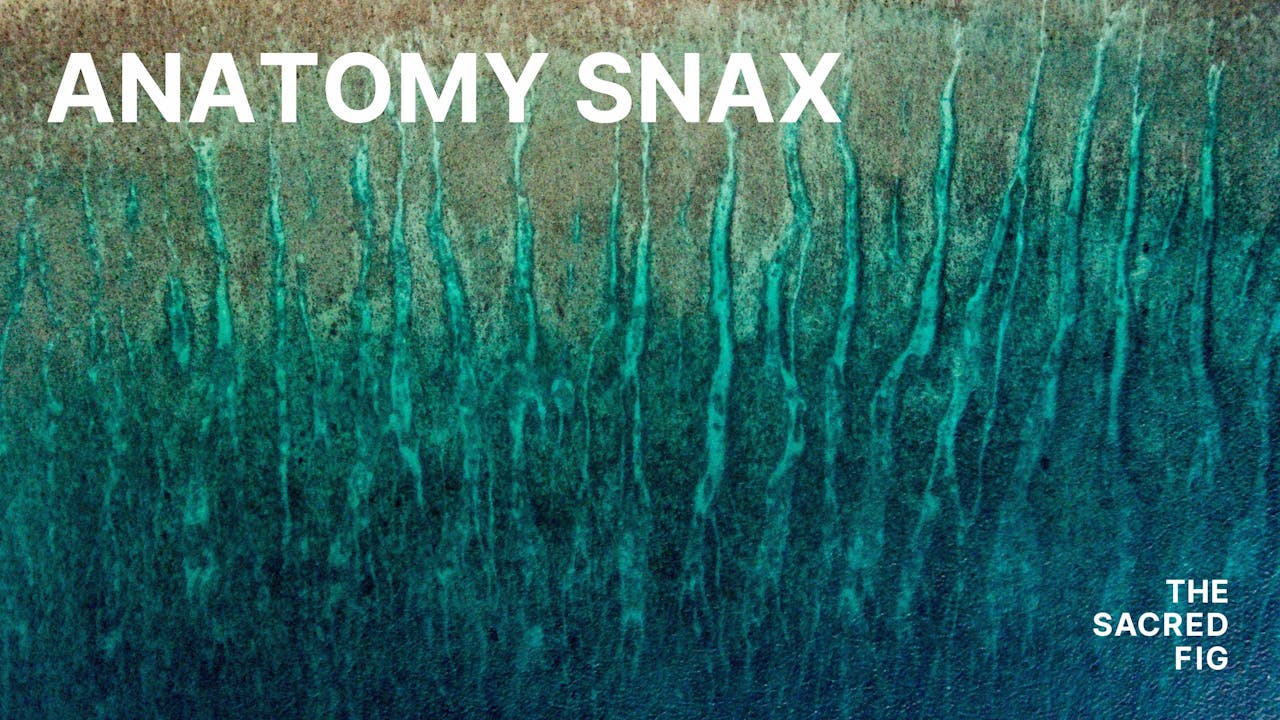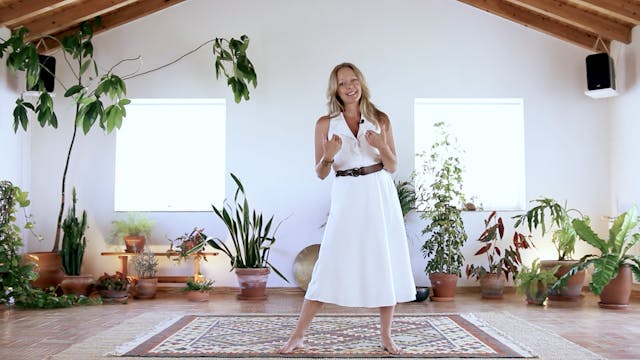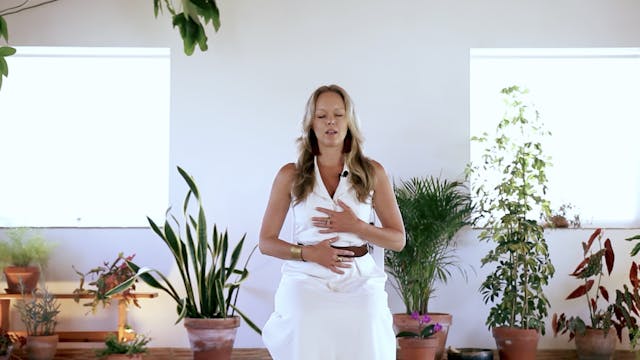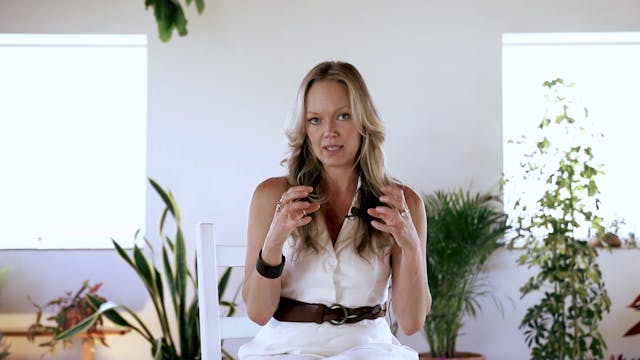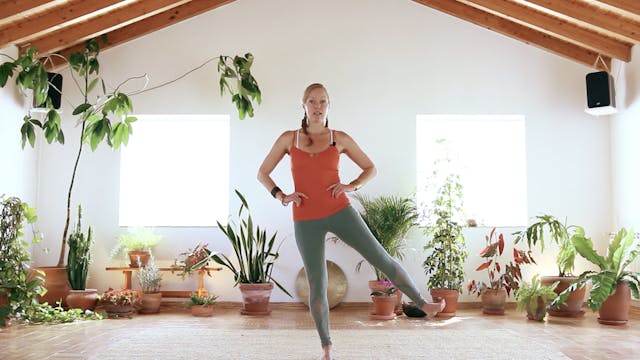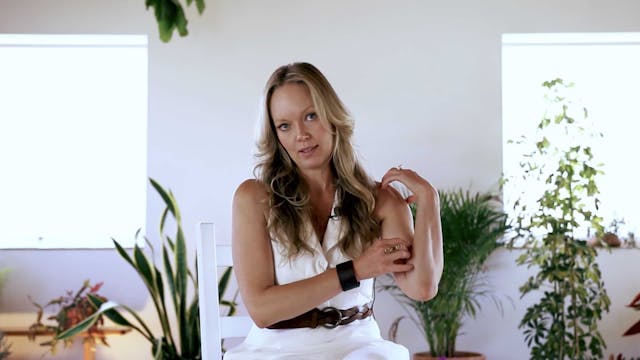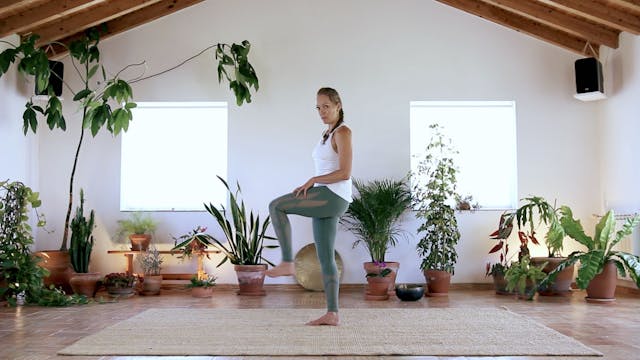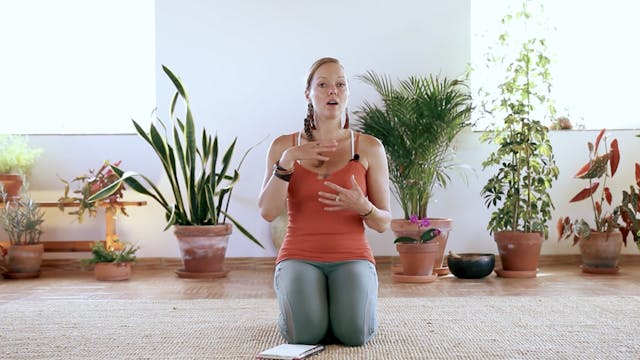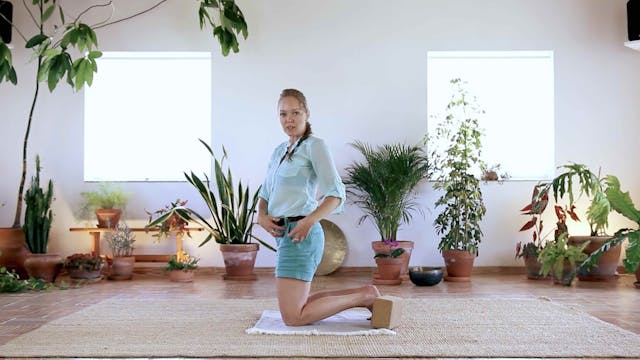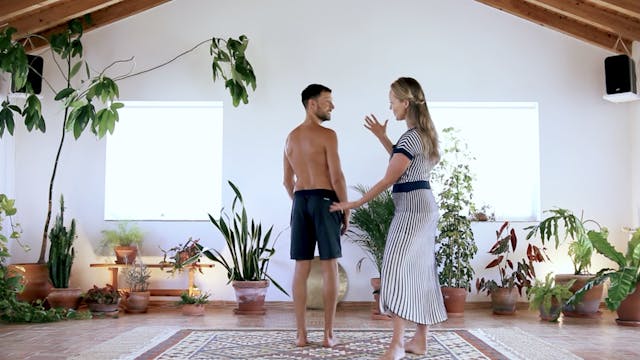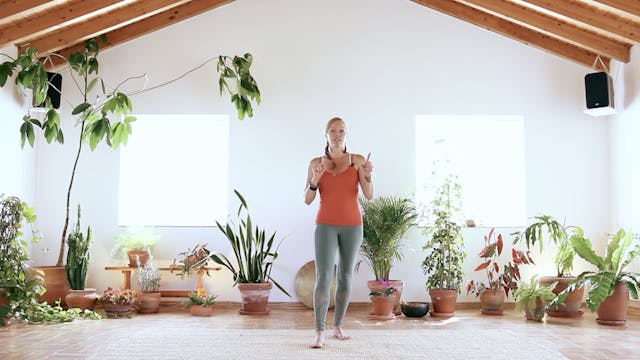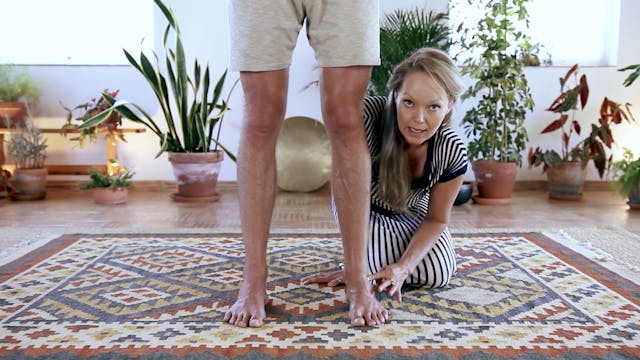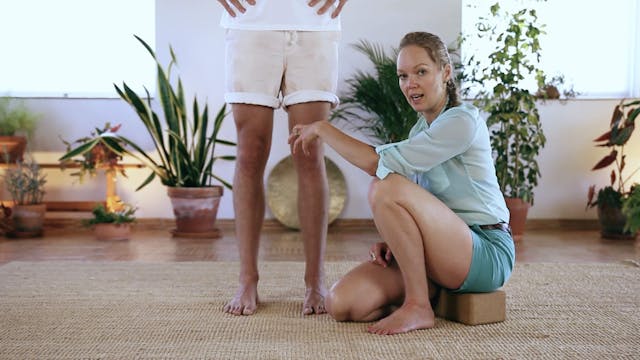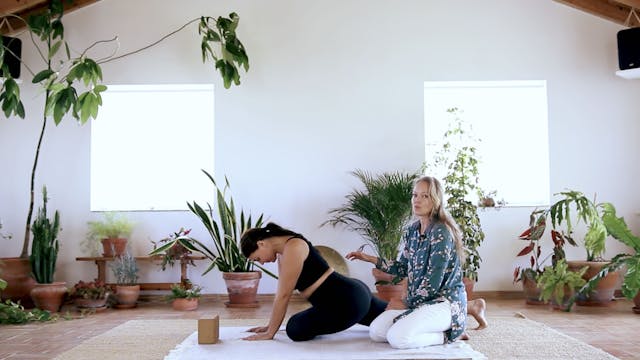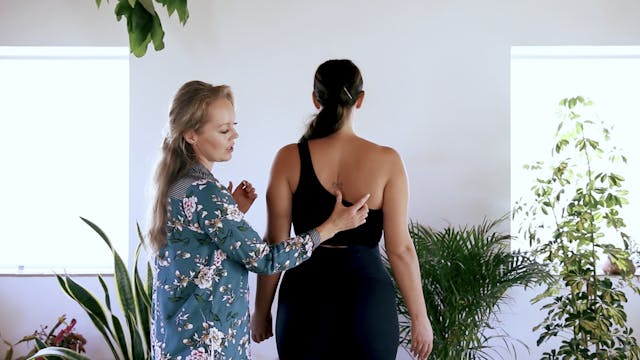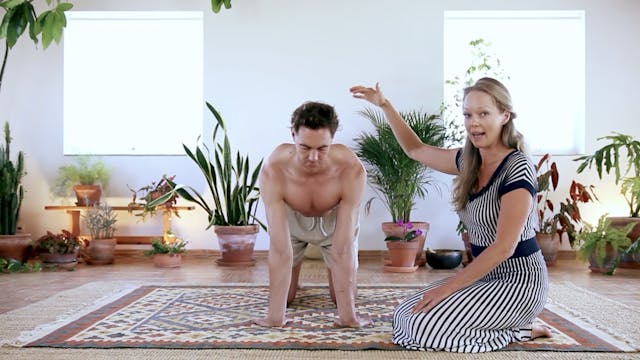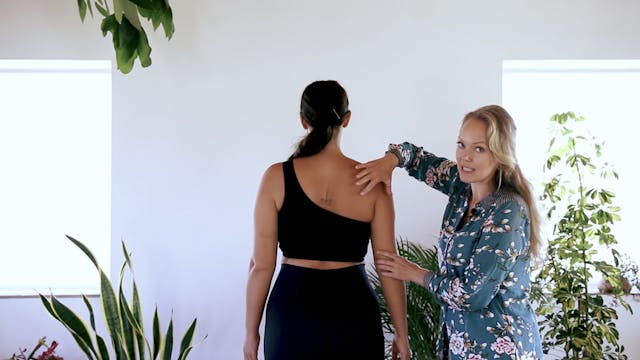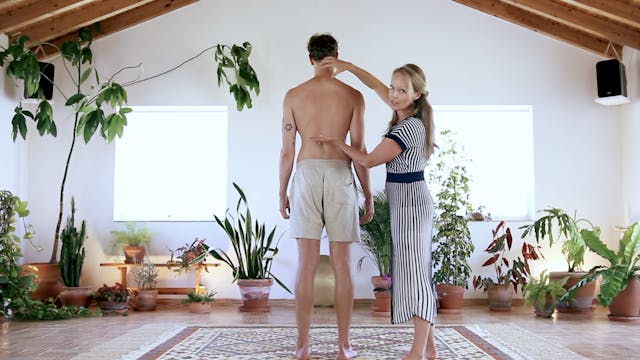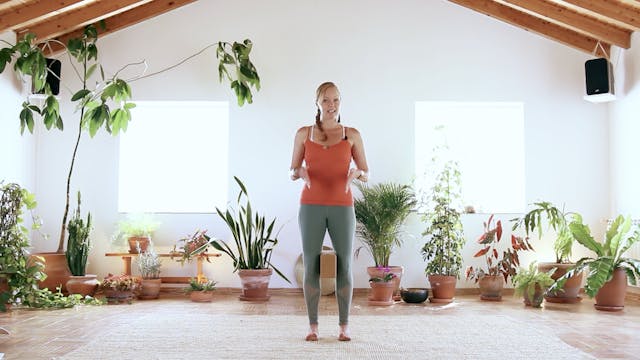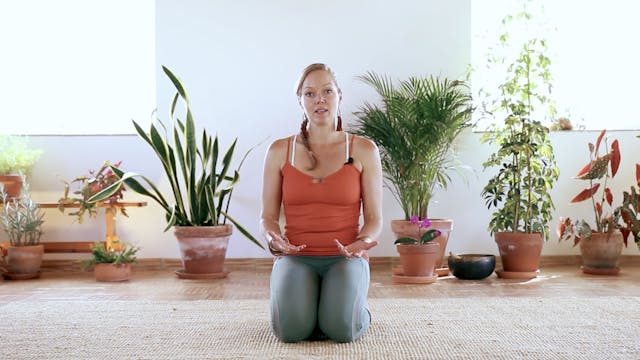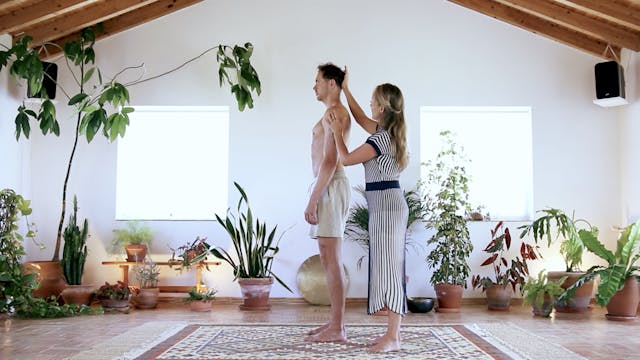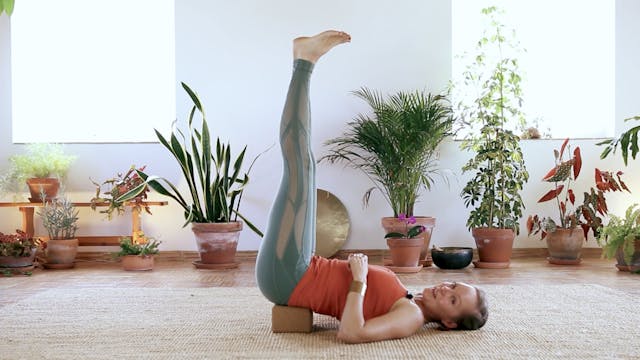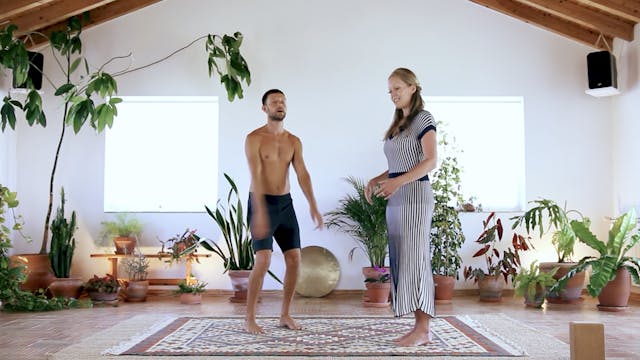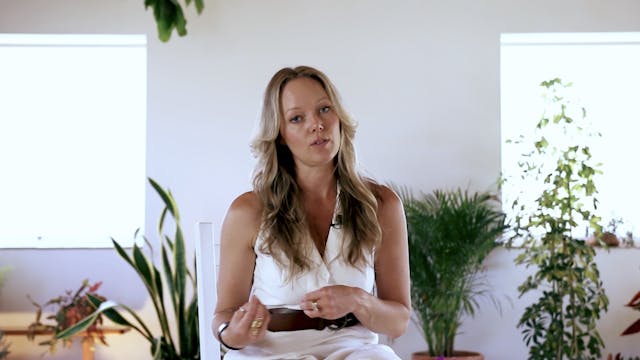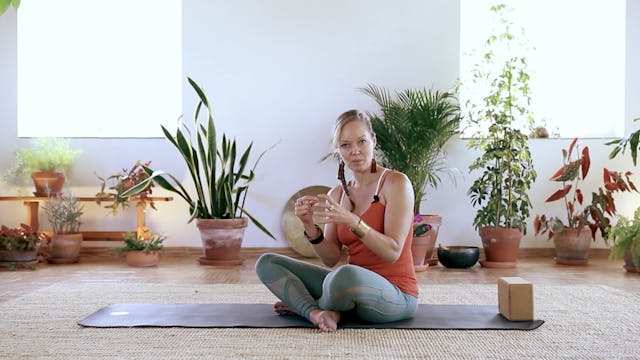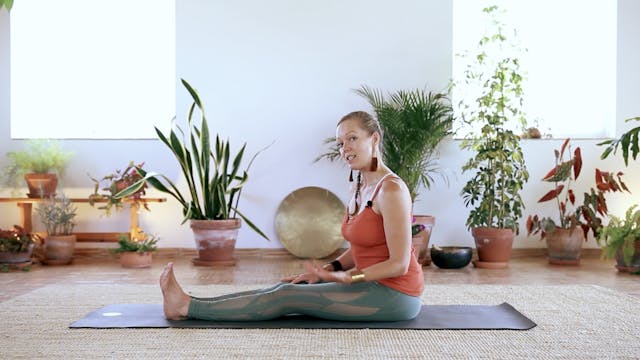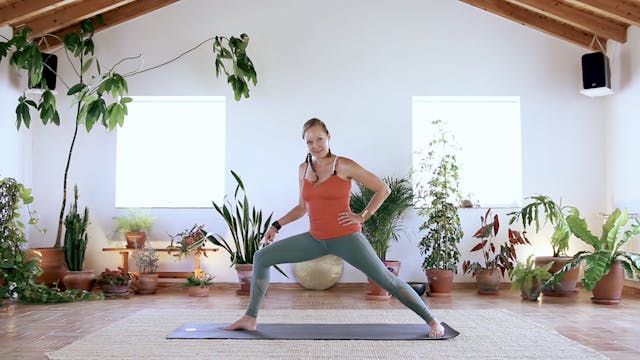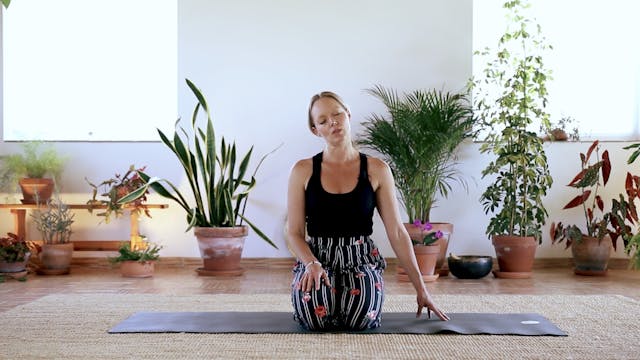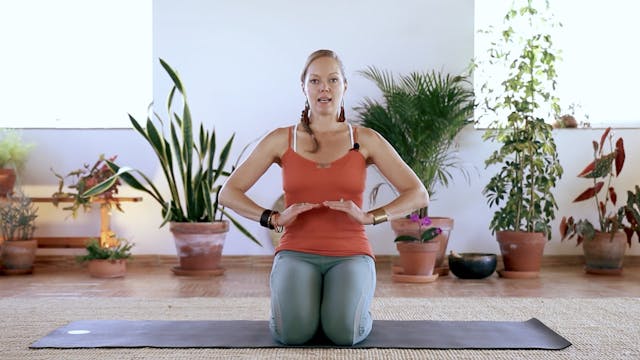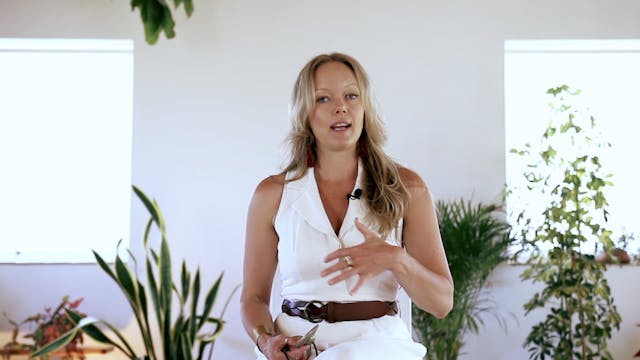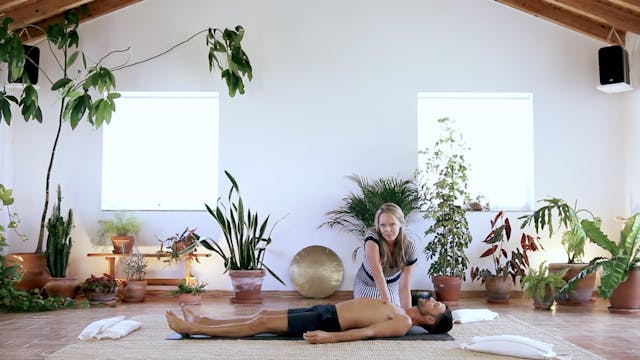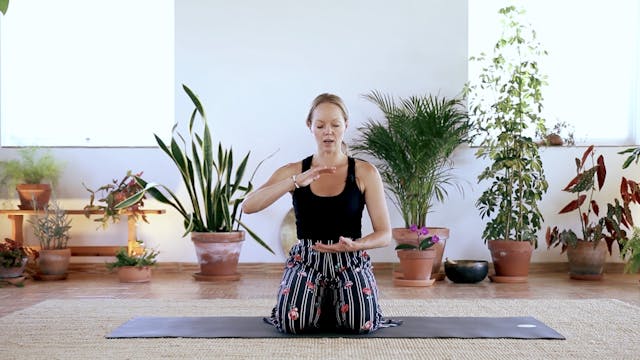Anatomy Snax
In this introduction to anatomy, you'll develop confidence with the musculoskeletal system, the nervous system, the mechanics of breathing, the glands, and organs. This online curriculum totals 5 hours, with about 3 hours of video content, and 2 hours of homework. Learning is an active process, so if you want to remember this stuff, get off Instagram and do your homework! We've broken down the topics into short, digestible "anatomy snax", so that you can watch videos at your own pace, without feeling overwhelmed. Enjoy!
-
1. Meet Your Teacher, Sarah
Sarah Hobbs @sarahjessicahobbs.rmt has been working as a massage therapist for the past 20 years, and as a yoga teacher for the past 10. She's trained extensively in biodynamic facial integration, advanced visceral connection, prenatal, paediatric, osteopathic manual therapy and has studied embod...
-
2. Entrainment
A brief opening exercise on connection. This video is part of an online curriculum developed for The Sacred Fig 200 hour Yoga Teacher Trainings. It is designed to be watched as a prerequisite prior to participating in the training. Watch the videos in order.
-
3. Strength + Flexibility
Let's talk about strength, flexibility, stability and mobility. This video is part of an online curriculum developed for The Sacred Fig 200 hour Yoga Teacher Trainings. It is designed to be watched as a prerequisite prior to participating in the training. Watch the videos in order. Homework: Why ...
-
4. Planes of Movement
The Planes of Movement and Osteokinematics. This video is part of an online curriculum developed for The Sacred Fig 200 hour Yoga Teacher Trainings. It is designed to be watched as a prerequisite prior to participating in the training. Watch the videos in order. Homework: Stand up and demonstrate...
-
5. Snap Crackle Pop : The Orchestra of our Joints
The little noises that our bodies make are called Crepitus. In this video, we'll look at arthrokinematics, specifically AROM (active range of movement) + PROM (passive range of movement). Homework: What is Crepitus? Why does it happen? Is it bad?
-
6. Agonist + Antagonist Partnerships
As we begin to study muscles + their actions, it’s important to remember that our body functions as a whole organism. We move in creative + beautiful ways! Although we learn the actions of individual muscles, in real-life movement, no muscle works alone. Homework: Choose a yoga pose, and see if y...
-
8. When I Think About Anatomy, I Touch Myself
In this lesson, we'll feel through the skeletal anatomy of the whole body! Homework: Watch this video twice. To remember more, it helps if you palpate your own body along with the video, say the names out loud, and write them down. Homework: Test your knowledge! Without the help of the video, go...
-
9. Rivers of Nerves
Let's look at the peripheral nervous system, specifically at the nerve pathways after they've exited the brain + spinal cord. Homework: Continue learning about the vagus nerve. Do some quick research online. Where in the body does this nerve run? What kinds of things is it responsible for? What ...
-
10. Looking At The Body: Introducing Videos 11-19
This is an intro to the 9 videos that follow. We suggest you watch this before watching the upcoming videos focused on specific body parts.
-
11. Let's Play Footsies
Let's take a closer look at the foot, including the tripod of the foot, inversion, eversion, and more. Homework: The gastroc and the soleus run together to create what tendon? What does that tendon attach to? Further study: how many arches does the foot have? Why is that important?
-
12. The Knee
Let's take a closer look at the knee, including the surrounding muscles + ligaments. Homework: Explain the myo-fascial connection from the thigh to the shin. What action do the hamstrings invite? What are the three points (the tripod of the foot) that Sarah suggests cueing to in the foot, and why?
-
13. The Thigh + Pelvis
In this video, we'll explore the muscles + movements of the thigh + pelvis. Homework: What actions do the glutes create in the legs? What are the muscles called that are located underneath the glutes? What do they do?
-
14. The Shoulder
Let's explore the shoulder, specifically how the scapula glide along the rib basket. Homework: Close your eyes and move your shoulders slowly in: protraction, retraction, elevation, and depression. What muscles create each unique movement? Can you feel them?
-
15. The Hand
Let's look at the hands, and their relation up to the shoulder blades. Homework: Get on your mat in a tabletop, and feel the relationship from your hands all the way up the kinetic chain, to your chest, shoulders + shoulder blades. What is the great affect of turning the hands around to face bac...
-
16. The Rotator Cuff
The Rotator Cuff is a group of 4 small muscles that attach to the shoulderblade. Homework: Where are the 4 rotator cuff muscles specifically located? What do they attach to? What action do they produce?
-
17. Soft Tissue of the Back
In this video, Sarah categorizes the spinal vertabrae into the lumbar (or lower back), the thoracic (mid/upper back) and cervical (neck). Homework: Where does the lat muscle insert? What kinds of movements recruit the lats?
-
18. Aint it hard bein' so (hard)Core
In this lesson, Sarah defines 'the core' as all of the muscles the hug into midline. Homework: Do you agree with Sarah's definition of 'core'? If not, how would you define it, and why? Where is the QL muscle, and what does it do? Close your eyes, do a movement, can you feel it?
-
19. The One + Only Psoas
Everyone's talking about the Psoas! It's our physically deepest muscle, and is the only muscle that connects our spine to our legs. Homework: What does the psoas specifically connect to? What action does it create in the body? How does Sarah suggest to work with it, and why?
-
20. Lining The Body Up
In this session, we examine some typical postural patterns, and offer options for different somatic ways of being. Homework: Ask a friend to stand relaxed as Dan did, and try to cue them into full body length.
-
21. Hum, Yawn + Sigh into the Parasympathetic
The Autonomic Nervous System is part of the Central Nervous System (CNS). It works without any effort on our parts, and it's divided into the Sympathetic + Parasympathetic. Homework: How do the sympathetic + parasympathetic systems work with sugars + energy? What do legs up the wall + slow exhal...
-
22. Shake It Off
Did you know that many traditions around the world have a shaking practice? Let's examine the effect of shaking on our mechanoreceptors. Homework: Stand up and shake your whole body for 1 minute. Afterwards, take a child's pose or savasana and notice how you feel. Write it down.
-
23. Somatic Awareness
The Somatic Nervous System, or voluntary nervous system, is part of the peripheral nervous system. Homework: What is the somatic nervous system? How do our gestures + movements create our life experience? Have you ever had a somatic experience in a yoga class similar to how Sarah described?
-
24. The Muscle Spindle
The Muscle Spindle protects muscles from stretching too far, too fast. Homework: What is the sensation of stretch, in relation to the muscle spindle? Come into a seated wide straddle fold, and follow the same process that Sarah does. How can you use this knowledge of the muscle spindle in order t...
-
25. WTF PNF
Facilitated Stretching / Proprioceptive Neuromuscular Facilitation (PNF) is a stretching technique utilized to increase range of motion (ROM) and flexibility. Homework: Try out the example that Sarah gave in this lesson. Does it work in your body? How can you cue this in a class setting?
-
26. Muscle Coactivation
Muscle coactivation deepens + stabilizes a pose. Homework: What is muscle coactivation? Try out coactivation in Warrior 2. What is the experience in your body? How can you cue this in a yoga class?
-
27. Breathing Muscles + Neck Stretches
The diaphragm is the primary muscle of respiration. Accessory muscles of respiration include the intercostals, serratus anterior + posterior, scalenes, SCM, pecs, and more! Homework: try the scalene stretch on your own. What kind of breathing would you incorporate to enhance this exercise?
-
28. The Diaphragm
The thoracic diaphragm is a domed muscle located under the lungs, inside the rib basket. Homework: Close your eyes, breath slowly. As you inhale, imagine your diaphragm descending. As you exhale, imagine your diaphgragm ascending to it's relaxed position. Now scan your body as you breathe. What e...
-
29. Chakras + Glands
The endocrine system is our gland system, which produces hormones to circulate messages throughout the body. This western medicine system aligns well with the traditional eastern Chakra system. Homework: write down the 7 Chakras, and which glands they align with.
-
30. Organized Organs
Let's explore the location of our organs! Homework: Follow along with Sarah on this session. Then afterwards, see if you can trace + name the same organs without her guidance. What is the mesenteric nervous system? Describe it. Name the emotion that is associated with each organ, as described in...
-
31. The Ultimate Savasana
Some savasana adjustment tips from a master bodyworker! Homework: Try out your version of the ultimate savasana on a friend. Ask them for honest feedback, and then try it out again on another friend. It takes time to get confident with touch, so be patient and keep practicing!
-
32. The Domes of Centering
Learn to center yourself from the crown of the head down through the soft palette, the heart, the diaphragm, and all the way down to the pelvic floor. Homework: practice along with Sarah. Then on your own, try to remember all the domes, and close your eyes and see if you can bring awareness to ea...

